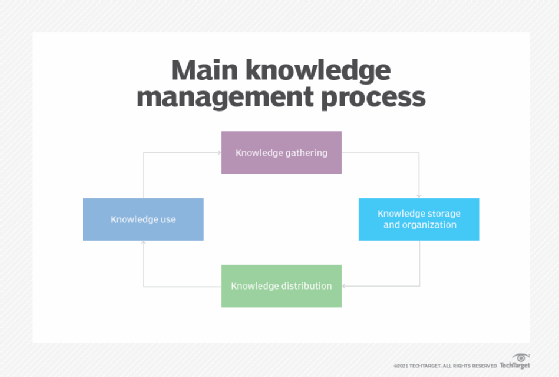7 tips for creating a knowledge base

A knowledge base can make information more useful and actionable for employees, service agents and customers.
As customers visit websites, they may want to know whether to buy a particular product or how to solve an issue. Organizations can increase satisfaction and sales and lower employees’ burden if they use a knowledge base to distill information into bite-size chunks that answer customers’ questions. However, creating a knowledge base can pose challenges, especially with ongoing maintenance and improvement, said Nick Kramer, vice president of applied solutions at SSA & Company, a management consulting firm.
To implement and maintain an effective knowledge base, organizations should follow best practices, such as creating feedback loops, building a culture of knowledge sharing and engaging in regular maintenance.
Why is a knowledge base important?
Knowledge bases require a lot of effort to maintain, but they can make a significant difference for employees and customers. “A knowledge base is core to insights-based decision-making,” said Bharath Thota, partner in the advanced analytics practice at consulting firm Kearney.
Knowledge base software can help organizations do the following:
- Offer users a single source of truth (SSOT) to enable accurate insights and informed decisions.
- Improve employee productivity and customer satisfaction as the tool makes people more self-sufficient and confident in their decision-making.
- Let customers answer their own questions, which can reduce self-service bounce rates and increase conversion.
- Analyze user behavior to assess the quality of knowledge articles, better understand user queries and write more precise answers.
- Create a collaborative, data-driven culture, which enables flexibility and long-term success.
- Reduce customer support costs as it offers customers a self-service option.
Organizations should think of a knowledge base not as a static collection of facts, but as part of a feedback loop that offers reliable information and self-service, and helps them continuously learn and update knowledge.
These self-service tools reduce the number of support tickets service agents receive, which lets them spend time on more complicated questions. Customers that can easily find answers to their questions are more likely to be satisfied, which leads to increased customer loyalty and repeat business.
7 tips for creating a knowledge base
A knowledge base can make employees more productive and improve customer satisfaction. Knowledge teams can use the following tips to guide them as they create a knowledge base.
1. Create feedback loops
A knowledge base should be a living, breathing process beyond just storing information. Teams should build a feedback loop into the knowledge base so articles remain up to date, said Ashley Dodge, vice president of community at Copado, a DevOps platform for Salesforce. For example, a knowledge base should let users rate articles and offer feedback so content teams can update and improve content.
The constant evolution of products is one of the biggest knowledge base challenges, Dodge said. Knowledge teams should work with product teams to update articles and maintain an SSOT as products change.
“This will save you a lot of headaches in the long run,” Dodge said.
2. Promote knowledge sharing as a cultural value
Teams can use knowledge bases to share information and best practices across their organizations, which can improve employee performance and innovation. However, a knowledge base only works if organizations embed sharing into the culture, Kramer said. A knowledge base can store information, but organizations must encourage employees to use it, add to it and engage with it.
To create a culture of knowledge sharing, organizations need a leader to run the knowledge management strategy. These leaders, often respected, senior employees, use their influence to inspire teams across the organization to regularly share knowledge with their co-workers. For example, managers may ask experienced workers to give presentations to their peers. They could then store recordings or notes from these presentations in the knowledge base for others to access later.
3. Decide what tools to integrate with
Organizations must choose the right tools to streamline the knowledge base implementation and maintenance processes. Knowledge teams should look for tools that align with their organization’s existing workflows.
The right content management system (CMS) can help organizations manage their knowledge base more easily, Kramer said. For example, an organization that runs its company website on WordPress can find WordPress plugins to quickly add a knowledge base to their existing site. Knowledge teams can choose from several different CMS options to find one that fits their needs.

4. Know the target audience
Knowledge teams should identify the target audience and their needs, then work backward from there to clearly define goals and objectives, Thota said. This process can help prioritize accurate, up-to-date and comprehensive information to ensure a high-quality UX. This approach can also help organizations structure the knowledge base in an accessible, searchable and digestible way that can support users and their needs.
5. Regularly review and update content
Many organizations struggle to manage the quality and completeness of their knowledge base content. Teams should work regularly with subject matter experts and monitor user feedback to review and update the content, Thota said.
Continuous reviews can help knowledge teams promote user adoption through targeted communications, training and support. These reviews also offer an opportunity for knowledge teams to review their security efforts and ensure compliance with the latest data protection regulations.
6. Create a governance structure
To create an effective knowledge base, organizations need a governance structure in place, said Lynda Braksiek, principal research lead for knowledge management at research company APQC. Knowledge management policies and procedures should follow relevant laws and regulations, and a governance structure can help organizations maintain consistent standards and processes.
A governance structure should also identify key roles on a knowledge management team and assign them responsibilities. Roles may include a knowledge management leader, knowledge managers, subject matter experts, content writers and knowledge champions. Roles establish accountability, which ensures team will not overlook their responsibilities.
7. Make knowledge easily accessible
Ideally, organizations should have all their knowledge in one central repository — not spread across disparate systems.
“Disparate, time-consuming systems mean that employees may become overwhelmed or not bother to look for relevant knowledge,” Braksiek said.
A central repository increases productivity, enhances collaboration across silos and helps content teams track which topics they’ve already covered.
Organizations should also ensure their knowledge base offers an up-to-date taxonomy and effective search function to further enhance ease of use. When customers and employees have a question, they should know exactly where to go and have confidence the search function will return relevant results.





